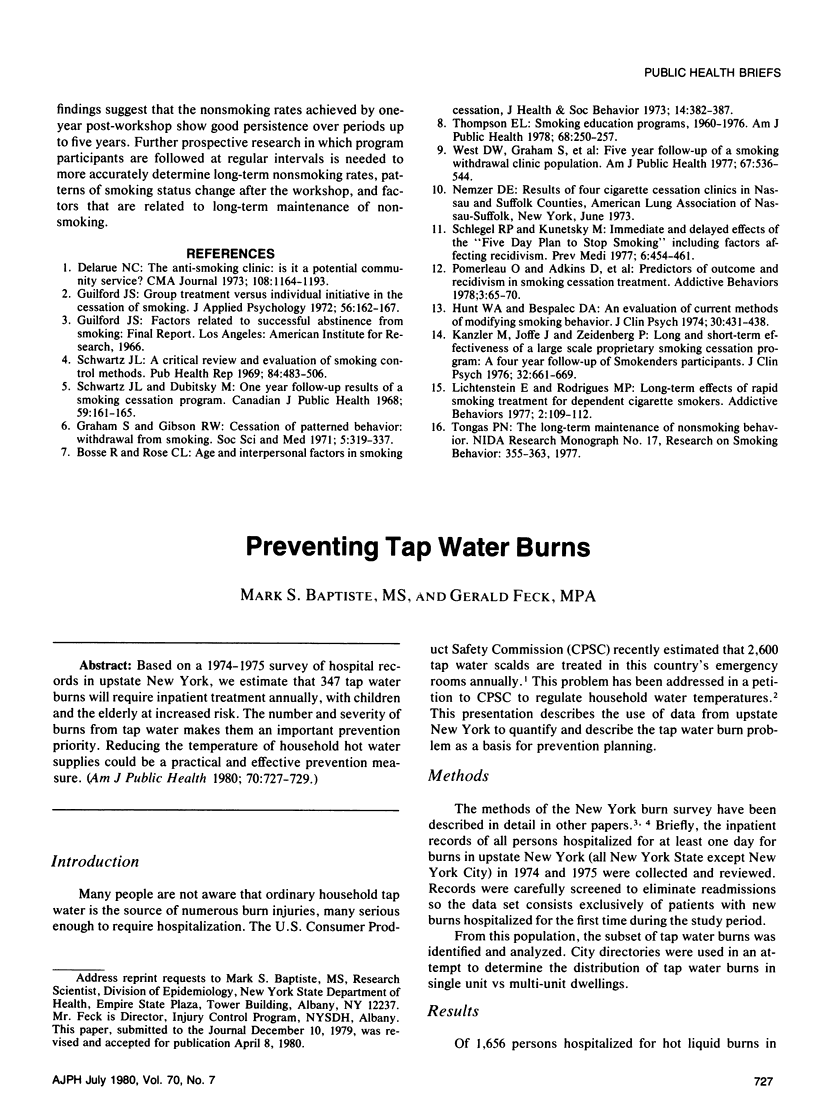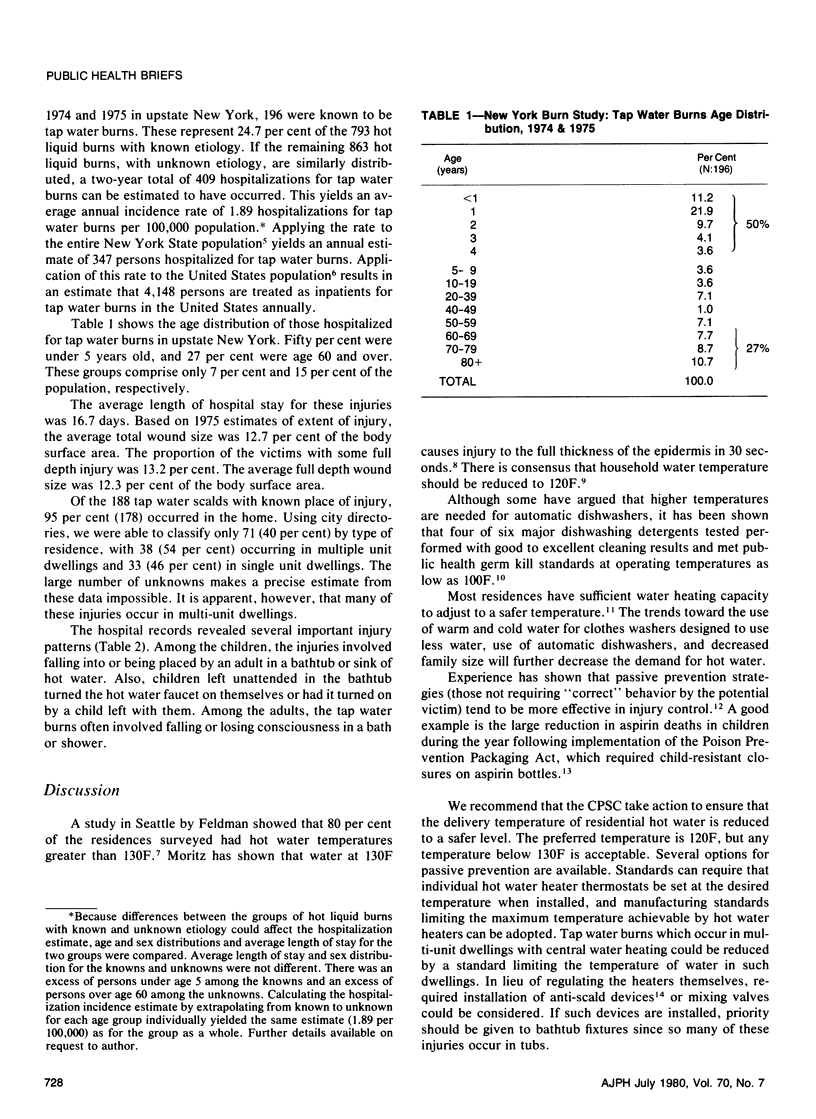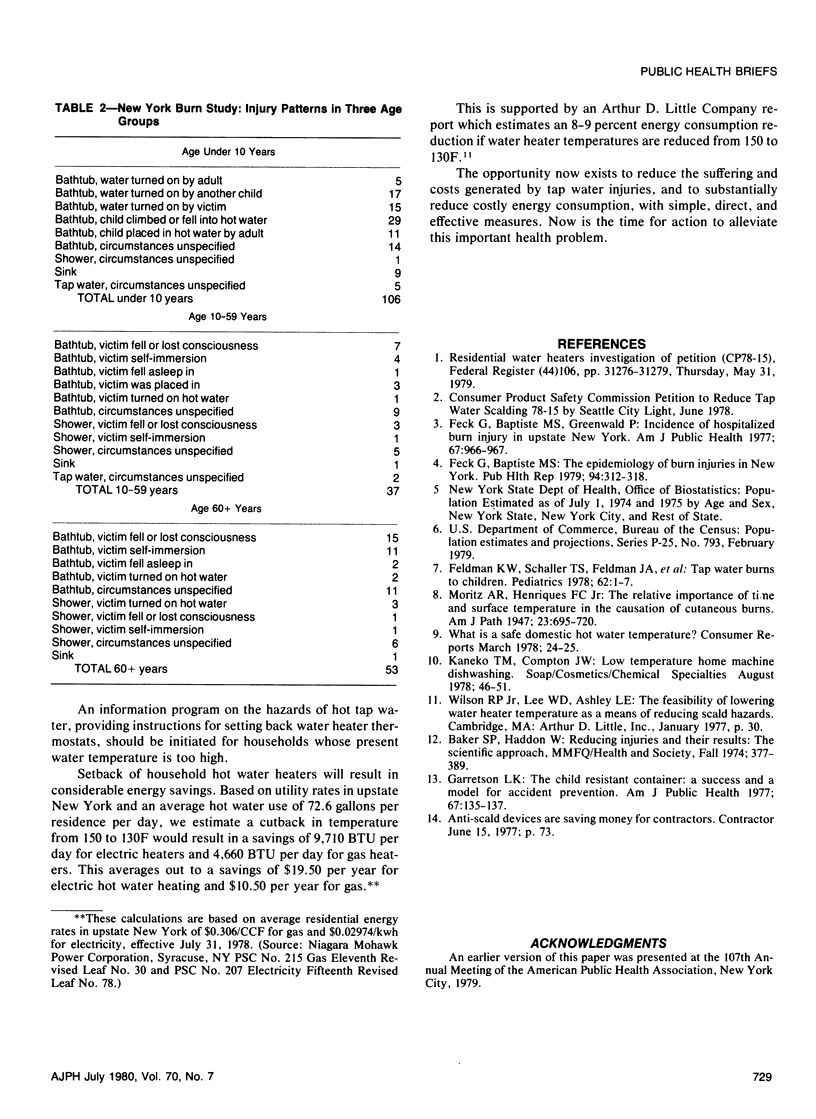Abstract
Based on a 1974-1975 survey of hospital records in upstate New York, we estimate that 347 tap water burns will require inpatient treatment annually, with children and the elderly at increased risk. The number and severity of burns from tap water makes them an important prevention priority. Reducing the temperature of household hot water supplies could be a practical and effective prevention measure.
Full text
PDF


Selected References
These references are in PubMed. This may not be the complete list of references from this article.
- Baker S. P., Haddon W., Jr Reducing injuries and their results: the scientific approach. Milbank Mem Fund Q Health Soc. 1974 Fall;52(4):377–389. [PubMed] [Google Scholar]
- Feck G., Baptiste M. S. The epidemiology of burn injury in New York. Public Health Rep. 1979 Jul-Aug;94(4):312–318. [PMC free article] [PubMed] [Google Scholar]
- Feck G., Baptiste M., Greenwald P. The incidence of hospitalized burn injury in upstate New York. Am J Public Health. 1977 Oct;67(10):966–967. doi: 10.2105/ajph.67.10.966. [DOI] [PMC free article] [PubMed] [Google Scholar]
- Feldman K. W., Schaller R. T., Feldman J. A., McMillon M. Tap water scald burns in children. Pediatrics. 1978 Jul;62(1):1–7. [PubMed] [Google Scholar]
- Garrettson L. K. The child resistant container: a success and a model for accident prevention. Am J Public Health. 1977 Feb;67(2):135–136. doi: 10.2105/ajph.67.2.135. [DOI] [PMC free article] [PubMed] [Google Scholar]
- Moritz A. R., Henriques F. C. Studies of Thermal Injury: II. The Relative Importance of Time and Surface Temperature in the Causation of Cutaneous Burns. Am J Pathol. 1947 Sep;23(5):695–720. [PMC free article] [PubMed] [Google Scholar]


